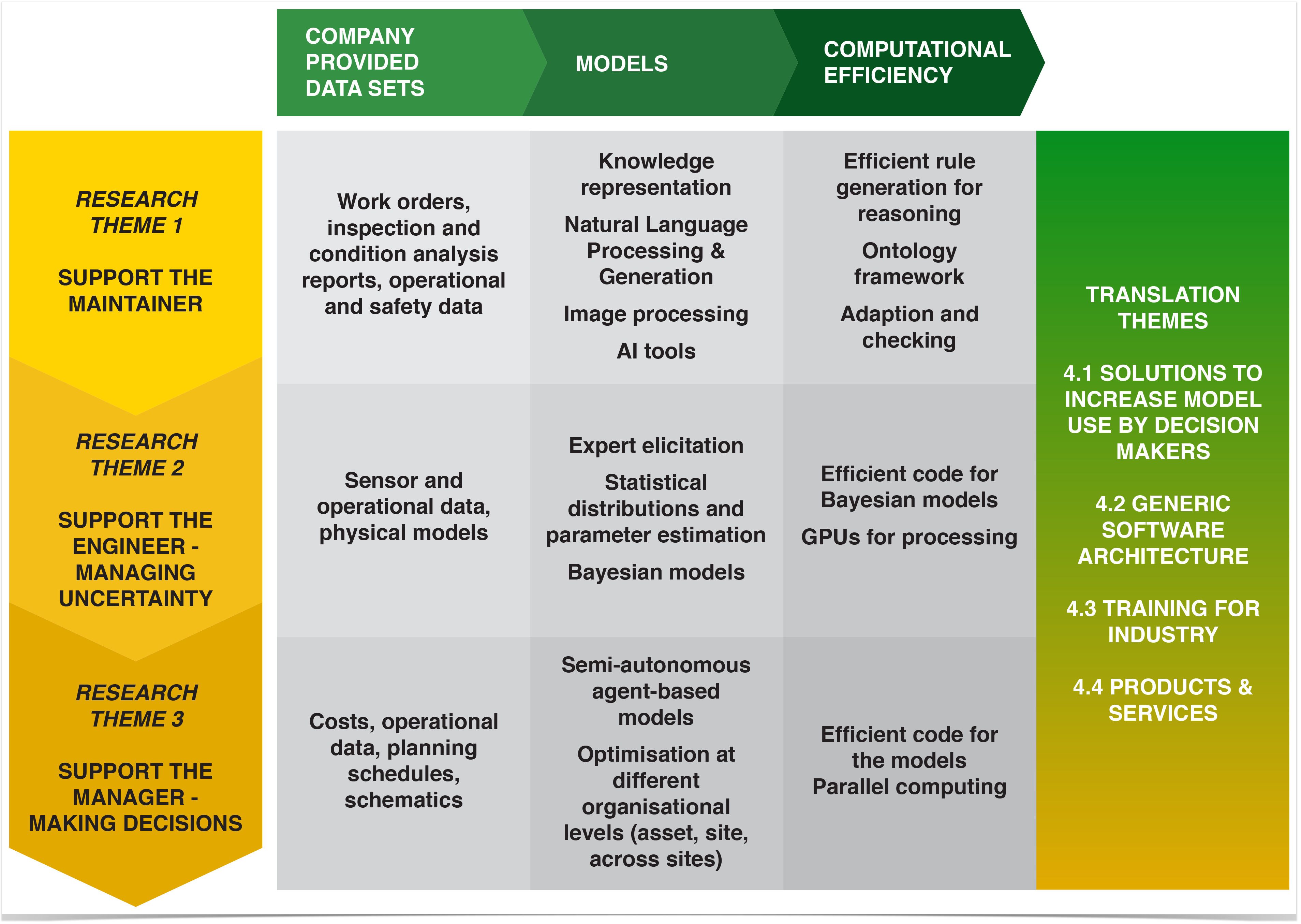Vision
Transform the maintenance management process, enabling Australian companies to lead the way maintenance is conducted, increasing both productivity and profitability through the automation of the work management stages.
Purpose
To deliver the next generation of data science solutions focused on the problems that industry needs, which is to ensure the efficient and effective maintenance execution.
Our academic-and-industry partnership will deliver the next generation of data science products coupled with training to ensure efficient and effective maintenance execution.
How
Enabling Maintenance Work Management by providing decision support solutions for activity that need a ‘human-in –loop’ for maintenance and automating activities that don’t.
Who
The centre is a partnership between Curtin University, The University of Western Australia, CSIRO and industry partners Alcoa, BHP and Roy Hill, as well as CORE Innovation Hub and the Minerals Research Institute of Western Australia.
What
To enable this transformation, the Centre will focus on the three key roles in a new digitally-driven maintenance management system. These are:
|
THE CENTRE HAS THREE RESEARCH THEMES AND FOUR TRANSLATION THEMES.
Each research themes has a series of three blocks of work:
|
We understand that models by themselves don't deliver value; we also need to change organisational psychology/culture/training/software architecture/business process. What we believe makes this Centre special is that this is built-in alongside our translation themes.
